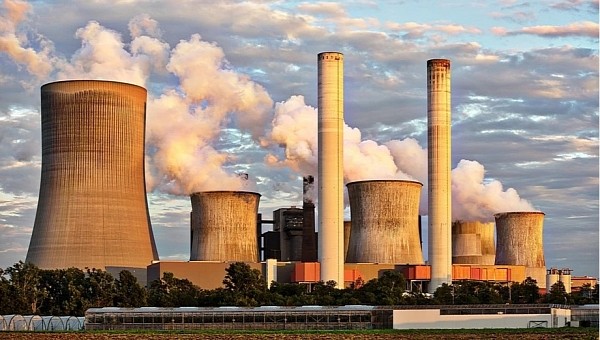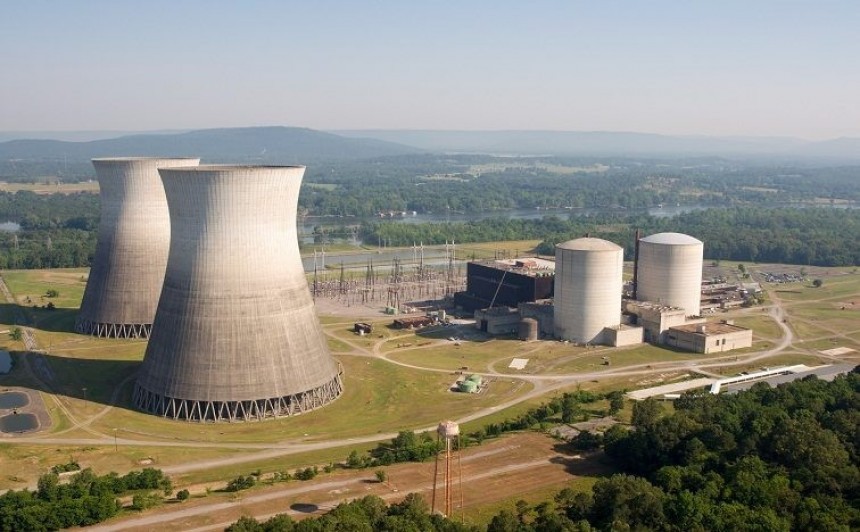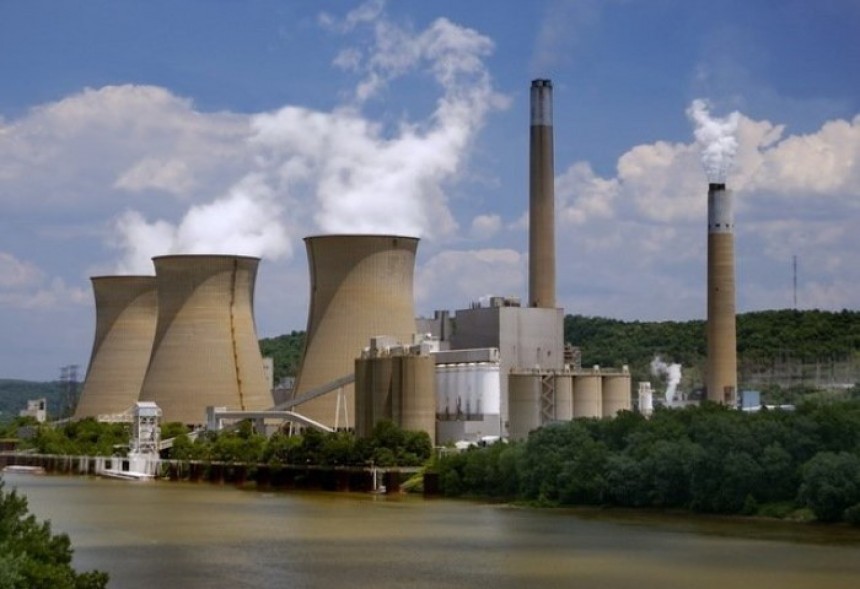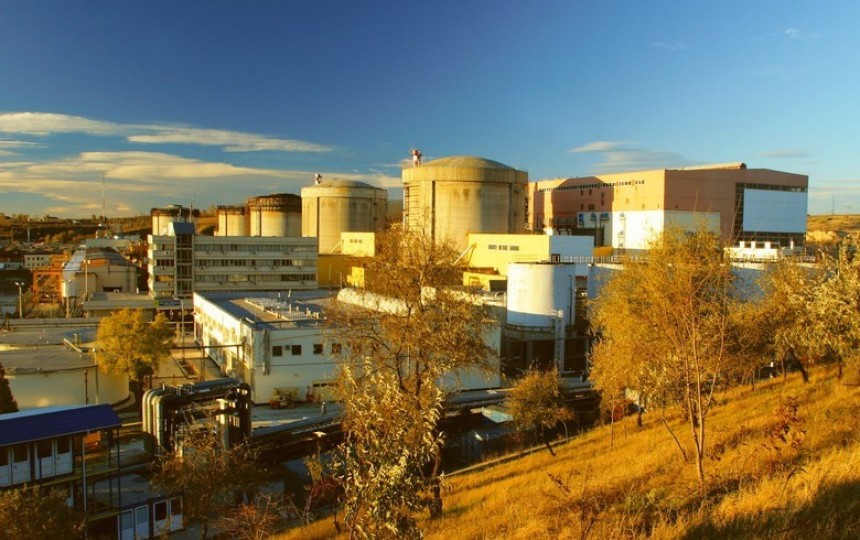In 35 years or so, the Romanians ditched communism, joined NATO, and nabbed the most controversial social media influencer in the history of the internet. But intertwined in all this, Romania played host to an energy plant that silently brought the country into the atomic era.
This is the story of the Cernavoda Nuclear Power Plant, the country's atomic titan. Located on the banks of the mighty Danube river near one of its outlets to the Black Sea, the CNPP is one of Romania's crowning international collaborations between itself and the west. One rooted in the old Communist government, but today shining a light on a nation quickly becoming an ambassador of democracy in Eastern Europe, in spite of its problems.
It was the Canadians who supplied the technology, the personnel, and considerable financial backing to help Romania achieve this profound point of national pride that, at one time, only global superpowers could muster. In truth, the Cernavoda Nuclear Plant's primary objectives were less rooted in national pride and more as a precautionary measure against a brutish Soviet bear of a state trying to impose its will on the country for decades.
Relations between the Soviets and Romania are often overlooked in global history classes post-1945. But as it happens, the de-satellization of Romania, i.e., the very public and ugly diplomatic breakup between itself and the Soviet Union, was perhaps the most important impetus behind the Cernavoda plant.
Even after the downfall of the Soviets, the Russian Federation continued to levy their native gas and oil reserves to gain strategic advantages over the rest of Europe. All ostensibly in a ploy to scare the true Russian rival, the United States, out of affairs in Europe. Spoiler alert, it didn't work.
In many respects, Romania was more autonomous and independent than even Cuba before Nicolae Ceausescu came to power. Though still an active member of the Warsaw Pact until 1969, the dictator himself certainly played a critical role in reaching out to the Atomic Energy of Canada Limited company (AECL) in 1978 to liberate itself further from the controlling grasp of Russo-Soviet oil and gas.
Located in Chalk River, Ontario, Canada, not far from the national border with New York State, AECL's expertise in proprietary, in-house designed fission reactors are still, to this day, one of the unappreciated gems of North American energy infrastructure. Tracing its engineering roots to the Canadian contribution to the Manhattan Project, ACEL's expertise soon became the CANDU-class (Canada Deuterium Uranium) nuclear fission reactor.
The CANDU class reactor was designed to run on a particularly "spicy" mix of uranium-238 and 235 isotopes. The reactor derives its name from liquid deuterium (heavy water), which is used to cool down radioactive fuel rods and maintain a smooth flow of thermal neutrons emitted from atom-splitting process. Deuterium also restricts the subatomic particles flung off from critical fission reactions from doing so far too quickly, preventing the concoction from going supercritical. In the nuclear engineering space, supercritical means a super bad time for all involved. In this application, the heavy water acts as what's known as a fission moderator material.
It's a consistent reaction that yields just as much power as the last, if not more, that's what's required. A special blend of light water (H2O) and heavy water (D2O) creates an environment that keeps uranium fuel rods in a comfortable middle ground, yielding high-pressure, steam-turbine-driven electricity without becoming supercritical.
If Romania wanted to kick the Russian gas station out and make its own supply of the good stuff, there were few better choices than CANDU reactors. With built-in safety features that ensured a Chornobyl (Chernobyl)-like disaster could be averted, the CANDU-class reactor had a remarkably less checkered accident history than the RBMK-class reactors the Soviets employed in Ukraine.
As an added gravy on top, CANDU reactors have an especially tasty fissile byproduct on occasion called tritium isotope (3H). As it happens, tritium is a rare and valuable resource with a positively tiny worldwide supply. What's extra special is tritium's potential for use in nuclear fusion reactors such as the ones employed in the U.K. and France at the JET and ITER labs, respectively. All in all, a pretty spectacular package for the Romanians.
Construction of Unit 1 at the Cernavoda was formally ordered by Nicolae Ceausescu and began on July 1st, 1982. By that time the next year, Unit 2 began construction as well. It was thought Romania could be an atomic power before the end of the 1980s. Assuming funding both domestically and internationally kept flowing for the plant's completion.
Except, things didn't go according to plan, as was evident on Christmas Day, 1989. Though we'll spare details, this is the day Romania kicked Communism to the curb and brought an era of instability but also empowering hope. All the while, it would take until December 1997 for CNPP Unit 1 to reach operational status. A further ten years were needed before Unit 2 was also online in October 2007.
Many types of fission reactors use nearby bodies of water to actively cool their nuclear fuel. But the vital Danube snaking through the heart of Europe never once comes into contact with the Cernavoda Nuclear Power Plant. Between the two reactors in operation at the present day, a total of 1,400 megawatts of nuclear energy is produced at full capacity. When all said and done, that's a total contribution of around 18 percent of Romania's total energy production.
That puts Romania's nuclear slice of its energy pie-chart within the United State's 20 percent. That's without accounting for differences in population and with a two percent or so margin of error. Even so, Nicolae Ceausescu once demanded in the mid-1980s that a further two or even three additional CANDU-6 reactors in 1985. But yet again, his downfall brought those plans to an abrupt halt.
Calls to complete the delivery of the third and fourth reactors began to sound again in the mid-2000s. Predictably, this was ultimately attributed to an abrupt bottleneck of Russian petrochemicals into Romania during an unexpected span of cold weather around the year 2005. These calls died down once the gas crisis was over, but expanding Romania's only current nuclear power station is a hot debate in Romanian society.
As of 2023, an international crisis just over the Romanian border in Ukraine is bringing calls to complete at least two more reactors at Cernavoda and perhaps even a third. With only Ukraine standing between Russia and the rest of Eastern Europe and the Balkans, both the U.S. and NATO surely have a vested interest in turning a once-reeling ex-communist state into a modernized, highly energized right-hand man to the United States in the region alongside Poland.
A key component, should this take place, is making sure Romania has plenty of energy to keep up with a potential total war situation with Russia. One thing's for sure. If lots of power is what you're after, nuclear energy is likely the best method to achieve this. With plans in place with U.S. aid already, it's only a matter of time before it happens.
It was the Canadians who supplied the technology, the personnel, and considerable financial backing to help Romania achieve this profound point of national pride that, at one time, only global superpowers could muster. In truth, the Cernavoda Nuclear Plant's primary objectives were less rooted in national pride and more as a precautionary measure against a brutish Soviet bear of a state trying to impose its will on the country for decades.
Relations between the Soviets and Romania are often overlooked in global history classes post-1945. But as it happens, the de-satellization of Romania, i.e., the very public and ugly diplomatic breakup between itself and the Soviet Union, was perhaps the most important impetus behind the Cernavoda plant.
Even after the downfall of the Soviets, the Russian Federation continued to levy their native gas and oil reserves to gain strategic advantages over the rest of Europe. All ostensibly in a ploy to scare the true Russian rival, the United States, out of affairs in Europe. Spoiler alert, it didn't work.
Located in Chalk River, Ontario, Canada, not far from the national border with New York State, AECL's expertise in proprietary, in-house designed fission reactors are still, to this day, one of the unappreciated gems of North American energy infrastructure. Tracing its engineering roots to the Canadian contribution to the Manhattan Project, ACEL's expertise soon became the CANDU-class (Canada Deuterium Uranium) nuclear fission reactor.
The CANDU class reactor was designed to run on a particularly "spicy" mix of uranium-238 and 235 isotopes. The reactor derives its name from liquid deuterium (heavy water), which is used to cool down radioactive fuel rods and maintain a smooth flow of thermal neutrons emitted from atom-splitting process. Deuterium also restricts the subatomic particles flung off from critical fission reactions from doing so far too quickly, preventing the concoction from going supercritical. In the nuclear engineering space, supercritical means a super bad time for all involved. In this application, the heavy water acts as what's known as a fission moderator material.
It's a consistent reaction that yields just as much power as the last, if not more, that's what's required. A special blend of light water (H2O) and heavy water (D2O) creates an environment that keeps uranium fuel rods in a comfortable middle ground, yielding high-pressure, steam-turbine-driven electricity without becoming supercritical.
As an added gravy on top, CANDU reactors have an especially tasty fissile byproduct on occasion called tritium isotope (3H). As it happens, tritium is a rare and valuable resource with a positively tiny worldwide supply. What's extra special is tritium's potential for use in nuclear fusion reactors such as the ones employed in the U.K. and France at the JET and ITER labs, respectively. All in all, a pretty spectacular package for the Romanians.
Construction of Unit 1 at the Cernavoda was formally ordered by Nicolae Ceausescu and began on July 1st, 1982. By that time the next year, Unit 2 began construction as well. It was thought Romania could be an atomic power before the end of the 1980s. Assuming funding both domestically and internationally kept flowing for the plant's completion.
Except, things didn't go according to plan, as was evident on Christmas Day, 1989. Though we'll spare details, this is the day Romania kicked Communism to the curb and brought an era of instability but also empowering hope. All the while, it would take until December 1997 for CNPP Unit 1 to reach operational status. A further ten years were needed before Unit 2 was also online in October 2007.
That puts Romania's nuclear slice of its energy pie-chart within the United State's 20 percent. That's without accounting for differences in population and with a two percent or so margin of error. Even so, Nicolae Ceausescu once demanded in the mid-1980s that a further two or even three additional CANDU-6 reactors in 1985. But yet again, his downfall brought those plans to an abrupt halt.
Calls to complete the delivery of the third and fourth reactors began to sound again in the mid-2000s. Predictably, this was ultimately attributed to an abrupt bottleneck of Russian petrochemicals into Romania during an unexpected span of cold weather around the year 2005. These calls died down once the gas crisis was over, but expanding Romania's only current nuclear power station is a hot debate in Romanian society.
As of 2023, an international crisis just over the Romanian border in Ukraine is bringing calls to complete at least two more reactors at Cernavoda and perhaps even a third. With only Ukraine standing between Russia and the rest of Eastern Europe and the Balkans, both the U.S. and NATO surely have a vested interest in turning a once-reeling ex-communist state into a modernized, highly energized right-hand man to the United States in the region alongside Poland.







